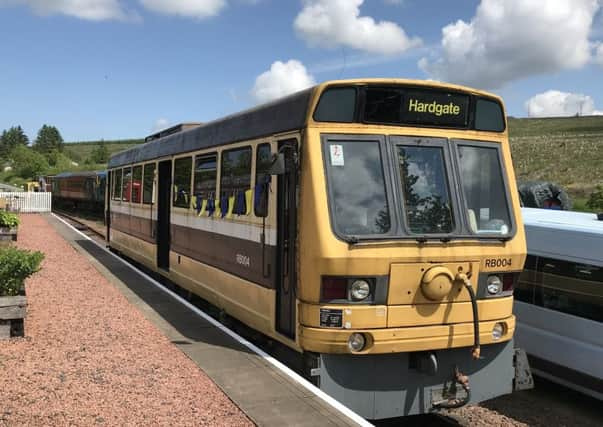UK’s most hated trains to run on Waverley route


The notorious Pacers are finally being phased out from routes in England and Wales, only for two to be given a new lease of life on a heritage line in the Borders.
They are due to run on the Waverley Route Heritage Association’s (WRHA) track south of Hawick this summer – giving people north of the border the chance to judge the trains for themselves.
Advertisement
Hide AdAdvertisement
Hide AdPacers only operated in Scotland for a few weeks in 1986 when the Edinburgh-Bathgate line was re-opened to passengers, and occasionally between Dumfries and Carlisle.
The 40-year-old trains were based on bus bodies, with their cheap construction derided for poor comfort but praised for helping to keep threatened lines open.
The pair coming to Scotland will run at weekends over a restored half-mile section of the former Edinburgh-Carlisle “Waverley Route” at Whitrope, which is due to be extended this year.
The WRHA said it bought the Class 142 Pacers because it already has a prototype, but agreed with their poor reputation. Chairman Chris Donnelly said: “The criticisms levelled against them by passengers are fair –they are noisy, drafty, bouncy and outdated.
“However, we also need to remember that were it not for them, many rail lines might well have closed.
“From a preservation point of view, you get quite attached to the trains you look after. I’m sure that it will be the same with them.
“Although they are not historically associated with the Waverley Route, we are already the home of the Railbus demonstration unit, the forerunner of the class.
“It will enable us to tell the story of the train which saved many lines facing the same fate as the Waverley Route.
Advertisement
Hide AdAdvertisement
Hide Ad“They will be a novelty for many of our visitors as they have never run regularly in Scotland. What makes them iconic is they encapsulate the last stand of nationalised industry in the 1980s.
“British Rail needed a cheap, lightweight train to save on maintenance and rolling stock costs as government funding was cut back, and British Leyland desperately needed an order to keep the production line going. The child of this marriage of necessity was the Pacer.”
York-based “Pacer punter” John Sparrow said criticism of the trains was not exaggerated. He said: “People hate them for their rough riding, especially on poor track. They are bouncy, smelly, have basic seats and are very noisy, especially on curves – the noise from the wheels is piercing. Often, rain water drips from the roof inside and you would only use the toilet if you really had too.” But Sparrow added: “They are very simple, so highly reliable and perfectly fine for short journeys.”
Simon Walton, chairman of the Campaign for Borders Rail to re-open the rest of the Waverley Route, said: “They were a solution at a time when the railways were previously under-appreciated as a national resource, and they are indeed now only fit as a historical demonstration piece. I’d encourage everyone to experience that bit of history at the heritage centre at Whitrope.”